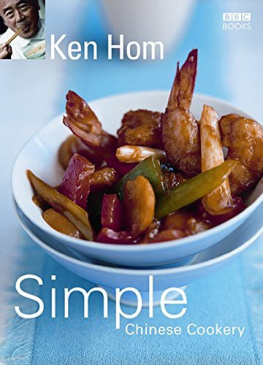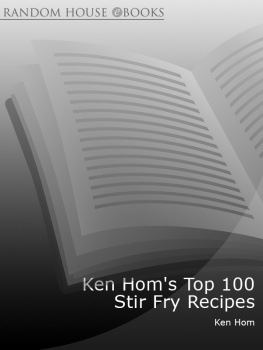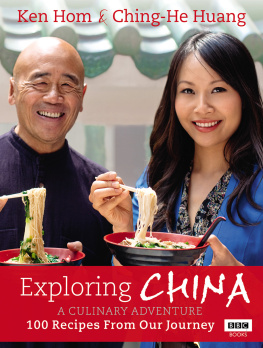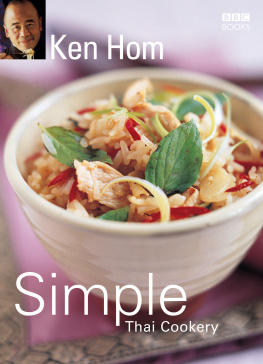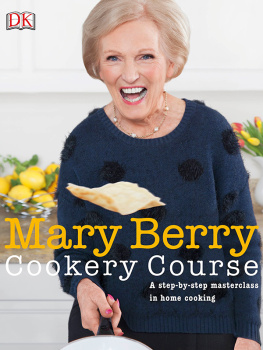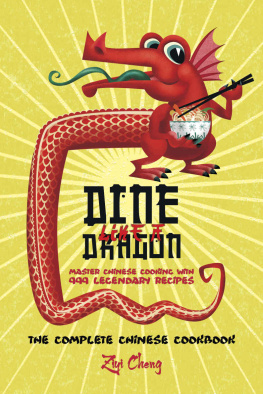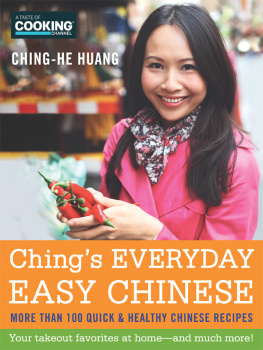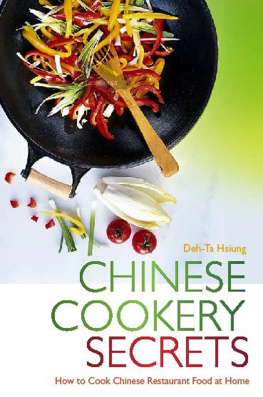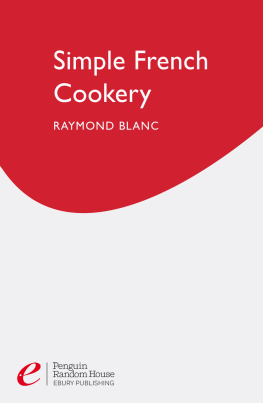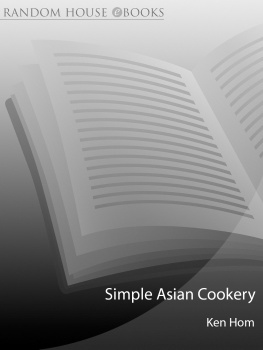Contents
About the Book
Chinese food is popular the world over. In Ken Homs Simple Chinese Cookery (formerly called Foolproof Chinese Cookery), available in paperback as well as hardback, Ken proves that anyone can cook this healthy and delicious cuisine.
Ken demonstrates 40 of the most popular and well-known Chinese dishes with step-by-step instructions and photographs to accompany every stage from start to finish. The recipes (including soups and starters, fish and shellfish, meat and poultry and vegetable accompaniments) are not only quick and easy to prepare but are also convenient as they use readily available ingredients. The cookbook also features a special menu section so that you can plan your perfect meal.
From simple Green Chicken Curry to the more elaborate Whole Fish in Coconut Milk, Kens easy recipes have foolproof instructions that will guarantee even the novice cook excellent results every time.
About the Author
Ken Hom is widely regarded as one of the worlds greatest authorities on oriental cooking. He has made several series for the BBC including Hot Wok, Travels with a Hot Wok and Foolproof Chinese Cookery, and his many books are worldwide bestsellers.
Introduction
My knowledge and love of Chinese cookery came from watching and imitating chefs at my uncles restaurant, where I was a young apprentice. Later, as a culinary professor, I was struck by the fact that although many of my students had read about various techniques in one or more of the many fine Chinese cookbooks available, it was only when they saw them demonstrated that they really understood them. And only then could they attempt to duplicate what I had shown them. The step-by-step procedures that I developed became the basis of my teaching and I used them extensively as a broadcaster. They form the backbone of the recipes in this book. The clich about pictures being worth a thousand words is more valid than ever.
China has one of the worlds oldest culinary traditions. Its cuisine is unique because it developed independently of the West. Because of the ancient, insular civilization, poor transportation network, lack of arable land, shortage of fuels and lack of ovens, Chinese chefs were forced to accommodate their art to necessity. Later, as the Chinese moved abroad, they took this culinary heritage with them. If one wishes to understand the essence of Chinese cooking, therefore, it is important to make a cultural leap of faith.
Chinese cooks are engaged in creating harmony. The size and shape of the food, the fragrances and the contrasting tastes and textures are all part of the final result.
Chinese cooks are engaged in creating harmony. The size and shape of the food, the fragrances and the contrasting tastes and textures are all part of the final result. Our aim is to attain a balance between all these elements. Often when I demonstrate, people are surprised by the simplicity and logic of this ancient cuisine. The tools we use are remarkably few and simple and the techniques so effective that cooks from other cuisines now use many of them.
In this book, you will see that Chinese cooking is really not very complex. The step-by-step photographs and the thoroughly tested recipes will help you to achieve success. However, you should be bold. Trust your palate. Follow the techniques and recipes but feel free to add your own touches. Adjust, invent, as Chinese cooks have done for centuries. Incorporate your favourite Chinese ingredients when cooking dishes from other cuisines. Use the techniques that you have mastered from this book and build upon them.
It is my hope that the pleasure you gain from making these foolproof recipes will give you the confidence of a true Chinese cook.
Ingredients and Equipment
INGREDIENTS
Events of the past few decades have opened up the kitchens of the world to Asian food, and many of the most exotic ingredients are now readily available in the West. This is especially true of Chinese food. The following is a brief guide to ingredients used in this book.
Beancurd
Also known by its Chinese name, doufu, or the Japanese, tofu, beancurd is highly nutritious and rich in protein, with a distinctive texture but bland taste. It is made from yellow soya beans, which are soaked, ground, mixed with water and then cooked briefly before being solidified. Beancurd is readily available in two forms as firm cakes or as a thickish junket and may also be found in several dried forms and in a fermented version. The soft junket-like variety (sometimes called silken tofu) is used for soups, while the solid type is used for stir-frying, braising and poaching. Solid beancurd cakes are white in colour and are sold in supermarkets and Chinese grocers, as well as in many healthfood shops. They are packed in water in plastic containers and may be kept in this state in the refrigerator for up to five days, provided the water is changed daily.
To use solid beancurd, cut it into cubes or shreds with a sharp knife. Do this with care as it is delicate. It also needs to be cooked carefully, as too much stirring can cause it to crumble.
Bok Choy (Chinese White Cabbage)
Although there are many varieties, the most common bok choy is the one with a long, smooth, milky-white stem and large, crinkly, dark-green leaves. The smaller the plant, the more tender it will be. Bok choy has a light, fresh, slightly mustardy flavour and requires little cooking. It is now widely available in supermarkets. Look for firm, crisp stalks and unblemished leaves. Store bok choy in the vegetable crisper of your refrigerator.
Caul Fat
Caul fat is a lacy membrane that lines the stomach cavity of pigs and cows. It melts during cooking and is often used by European and Chinese cooks to encase stuffings and keep meat moist and delicious. You should be able to order caul fat from your local butcher. It is highly perishable, so buy it in small quantities and use quickly. For longer storage, wrap the caul fat carefully and freeze it. To defrost, rinse in cold water. I find that soaking caul fat in cold water before use helps to separate the fat without tearing its lacy, fragile webs.
Chillies
Chillies are used extensively in western China, less so in the south. They are the seed pods of capsicum plants and can be obtained fresh, dried or ground. There are many types available and they vary greatly in flavour and heat.
Fresh Chillies
Fresh chillies should look fresh and bright, with no brown patches or black spots. As a general rule, red chillies are milder than green ones because they sweeten as they ripen, but nevertheless some red chillies can be very spicy indeed.
To prepare fresh chillies, rinse them in cold water, then slit them lengthways with a small sharp knife. Remove and discard the seeds. Rinse the chillies again under cold running water and then prepare them according to the recipe. Wash your hands, knife and chopping board before preparing other foods, and be careful not to touch your eyes until you have washed your hands thoroughly.
Dried Red Chillies
The dried red chillies used in China are usually small, thin and about 1 cm ( in) long. They are normally left whole or cut in half lengthways with the seeds left in and used to season oil for stir-fried dishes, sauces and braises. The Chinese like to blacken them and leave them in the dish during cooking but, as they are extremely hot, you may prefer to remove them immediately after using them to flavour the cooking oil. They can be found in Chinese and Asian grocers as well as in most supermarkets and will keep indefinitely in a tightly covered jar. When eating out, most diners carefully move the blackened chillies to one side of their plate.
Next page
